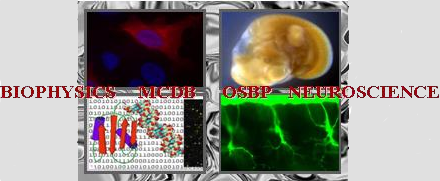Poster abstracts
Poster number 87 submitted by Christopher Wier
Discrepancy Between Behavioral and Electrophysiological Measurements in a Longitudinal Study of Motor Unit Recovery
Christopher G. Wier (Neuroscience Graduate Program), Kajri Sheth (Department of Biological Chemistry and Pharmacology), Patrick L. Heilman (The Ohio State Biochemistry Program), W. David Arnold M.D. (Department of Neurology, Department of Neuroscience, Department of Physical Medicine and Rehabilitation), Stephen J. Kolb M.D.,Ph.D. (Department of Neurology, Department of Biological Chemistry and Pharmacology)
Abstract:
Approximately 20 million Americans suffer from a peripheral nerve injury, with a majority occurring from traumatic causes. Following injury, peripheral nerves will eventually regenerate and reinnervate their target muscle fibers unlike injuries to the central nervous system. Pre-clinical functional behavior assays—toe spread measurements and toe spread reflexes—are used to record regeneration of the motor unit (MU) in animal models. Electrophysiological markers—compound muscle action potential (CMAP), motor unit number estimate (MUNE) and fibrillations with electromyography (EMG)—have been used by clinicians to diagnose patients with MU diseases in addition to tracking peripheral nerve recovery in patients. Pre-clinical longitudinal studies comparing the recovery rates of behavioral and electrophysiological measures are needed for understanding the underlying mechanisms of MU recovery. For this study, a complete sciatic nerve injury in adult mice was utilized to longitudinally compare the rates of MU recovery in behavioral functional assays and a previously described protocol for electrophysiological markers. Behavioral measures returned to baseline by 28 days post injury (28dpi) in all mice. EMG post-crush showed prominent fibrillation potentials (gastrocnemius), but by 28dpi minimal fibrillations were noted in only 23%. In contrast, at 28 dpi, CMAP and MUNE were 48% (18.1 ±7mV) and 29% (103 ±40 motor units) recovered. CMAP recovered to 74% (28.3 ±9mV) of baseline, within the standard deviation of the baseline measurement at 42 dpi, but MUNE was only 43% recovered (155 ±45 motor units). By 60 dpi, MUNE was still only 63% recovered (226 ±59 motor units). This suggests that mechanisms involved in motor unit recovery are still ongoing regardless of apparent behavioral recovery. Motor neuron quantification was investigated and axon pathology is on-going to provide an underlying mechanism. To better determine the effectiveness of pre-clinical therapeutics for motor unit recovery, electrophysiological markers should be used alongside functional behavioral assays during the time course of study.
Keywords: Motor Unit, Peripheral Nerve Injury, Electrophysiology
